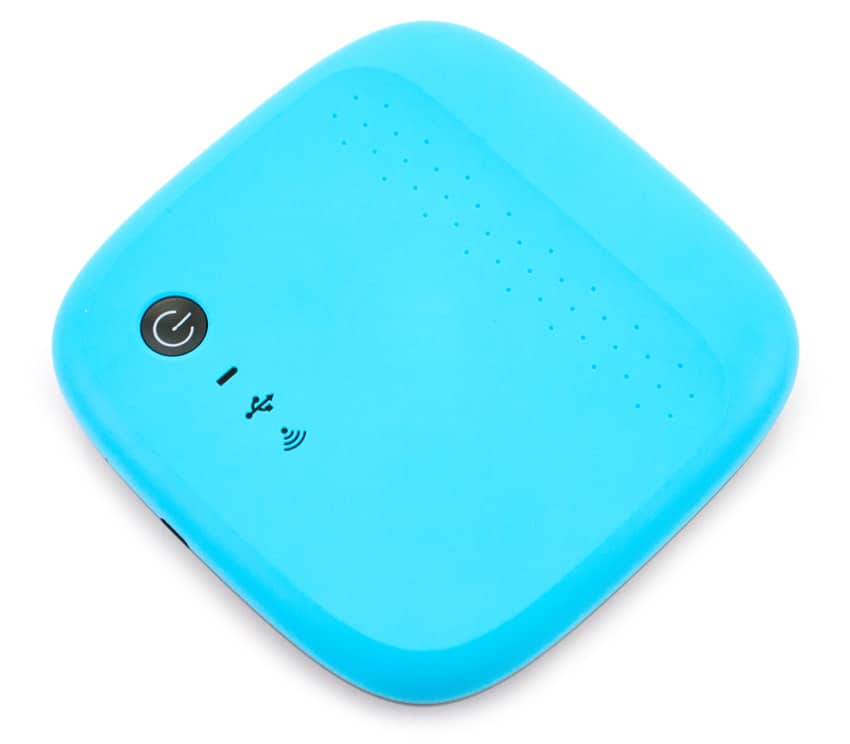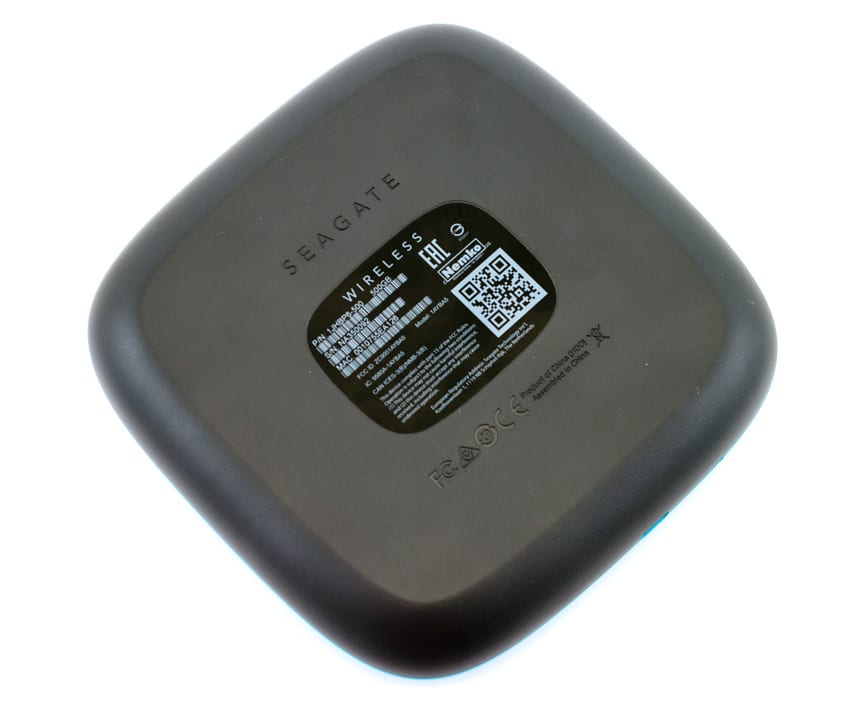
Seagate's newest addition to their signature line of wireless storage devices includes 500GB of storage and is geared more towards the everyday consumer than the previously reviewed Wireless Plus. Like their other wireless hard drives, Wireless Mobile Storage aims to ease the strain of large data libraries on mobile devices. Given the limited capacity of most smartphones and tablets, users end up streaming desired content. This can result in unnecessary data usage if the user is out of reach of Wi-Fi (often accompanied by usage fees). Offloading media libraries to Seagate's battery powered Wireless Mobile Storage (which creates its own local Wi-Fi signal) allows users to avoid usage fees while maintaining remote access to their content.

Wireless Mobile Storage can stream to up to three devices simultaneously and store up to 200 HD movies with up to six hours of battery life. Seagate has expanded the compatibility list for this device compared to the Wireless Plus, now allowing for big screen streaming through Chromecast, Roku, Airplay, and LG Smart TV (in addition to preexisting compatibility with iOS, Android, Kindle Fire, and Windows through the Seagate Media App). This means that Wireless Mobile Storage could more or less become a simpler plug-and-play version of a consumer NAS, all while maintaining its functionality as a remote hard drive for smartphones and tablets.
Wireless Mobile Storage (500GB) is available in five colors (black, white, red, green, and blue) for $129.99 and carries a 2-year warranty.
Specifications
- Capacity: 500GB
- Interface
- Wi-Fi
- USB 2.0
- Battery: 6h
- Dimensions (LxWxH): 24.5mm x 125.36mm x 125.36mm
- Weight: 281g
- Compatibility
- Windows 8, Windows 7, Windows 8/RT tablets and computers
- Mac OS X 10.7 (or higher), iOS 7.0 (or higher)
- Android 4.0 (or higher)
- Airplay
- LG SmartTV
- Chromecast
- Roku
- Kindle Fire
- Colors: Slate Grey, White, Fire-Engine Red, Lime Green, Cool Blue
- Package Contents
- Seagate Wireless Mobile Storage device
- USB cable
- Quick-start guide
- Warranty: 2 years
Design and Build
One of Seagate's main selling points for their Wireless Mobile Storage is the user's ability to customize their storage solution by choosing from five color options: slate grey, white, fire-engine red, lime green, and cool blue. All of the color schemes have a black base. The device is quite small overall with slightly rounded edges. There isn't branding anywhere on the chassis (except on the bottom), which contributes to it's aesthetic discretion. There is just a power button on the face, as well as three LEDs corresponding to USB, network, and charger connectivity.
Usability and Performance
Overall, use of Wireless Mobile Storage is straightforward and as streamlined as this class of device gets. The Seagate Media app is cleanly designed and allows users to easily manage file transfers. The contents of the device are managed under a drop-down menu at the top-right of the interface, which lists the files according to type as well as their retaining folder. The interface also indicates the network connectivity of the Seagate.
There are four administrative icons along the top right of the interface: a search function, alerts, and a drop-down menu. The drop-down menu has a refresh button, connection indicator, a user list, battery life, system settings, and a help button.
Within the settings, users can adjust specific settings within the mobile app (language, etc.), name and security settings of the device itself, an Auto Upload feature (for easy backup), Remote Access (for access over the internet), an About tab (for system information), and standard problem reporting.
Compared to the interface of the mobile app, the desktop interface is less well designed and intuitive. All of the relevant features present in the mobile app are accessible in the desktop app, but they are not arranged in the same way, which could cause confusion in some users who access both the app and the web interface. Given Seagate likely leveraged the LaCie design team for the app (who is now part of Seagate), it's odd they'd leave the web interface behind.
From a performance perspective, the Seagate Wireless works reasonably well when tasked with passing data back and forth. Loading a handful of images from an iPhone to the unit took under thirty seconds and the app provides an alert when its tasks are complete. Streaming from the Seagate to an iOS device works well too. Loading the initial buffer takes some time, but once the streaming starts, the process is largely fluid. This unit is not rated for a large number of users though; for those with more demanding needs, the Wireless Plus would yield a better experience. It also only offers USB 2.0 for direct attached, so consumers will be limited to roughly 30MB/s when transferring files.
Conclusion
Wireless Mobile Storage by Seagate is a straight-forward off-the-grid solution that delivers 500GB of storage to consumers that either want to supplement their home system or lighten the load of their mobile devices without sacrificing media access. In addition to providing more storage space than any standard smartphone or tablet, this can work to reduce data access needs while on the go. The mobile app interface is good but the web interface remains inexplicably left behind. Both get the job done though when it comes down to accessing and transferring files.
Seagate has expanded their compatibility with this device, now allowing users to stream content through Chromecast, Roku, Airplay, and LG Smart TV. It can function for up to 6 hours on battery alone, and is managed remotely through its clean Seagate Media app. Given its intended use-case, its performance capabilities are fine. However, it will not adequately serve users looking for lightning-fast transfers.
Pros
- Media accessibility across devices
- Small, non-invasive chassis
- Expanded support for streaming devices (Roku, Chromecast)
Cons
- Desktop management is dated
- USB 2.0 means limited direct-attached performance
The Bottom Line
The Seagate Wireless Mobile Storage solution is well-equipped to serve most consumers looking to offload their media libraries while maintaining easy access across a wide set of devices with or without an Internet connection.
Seagate Wireless Mobile Storage at Amazon





